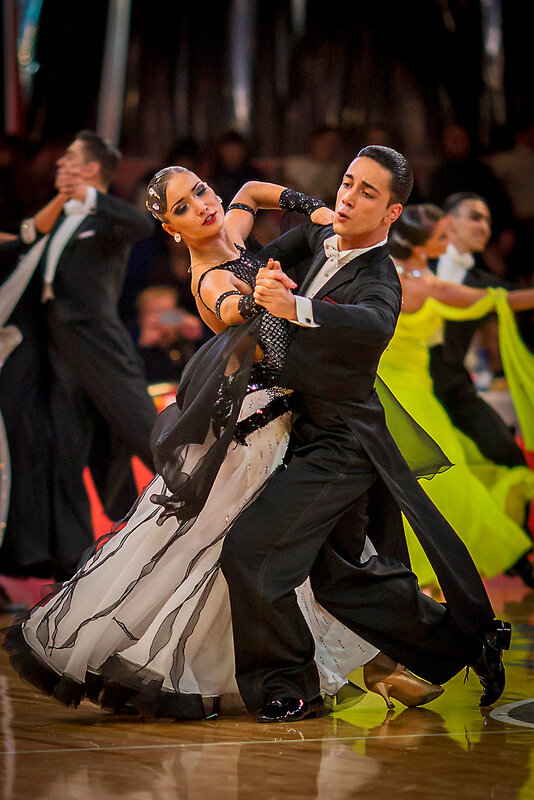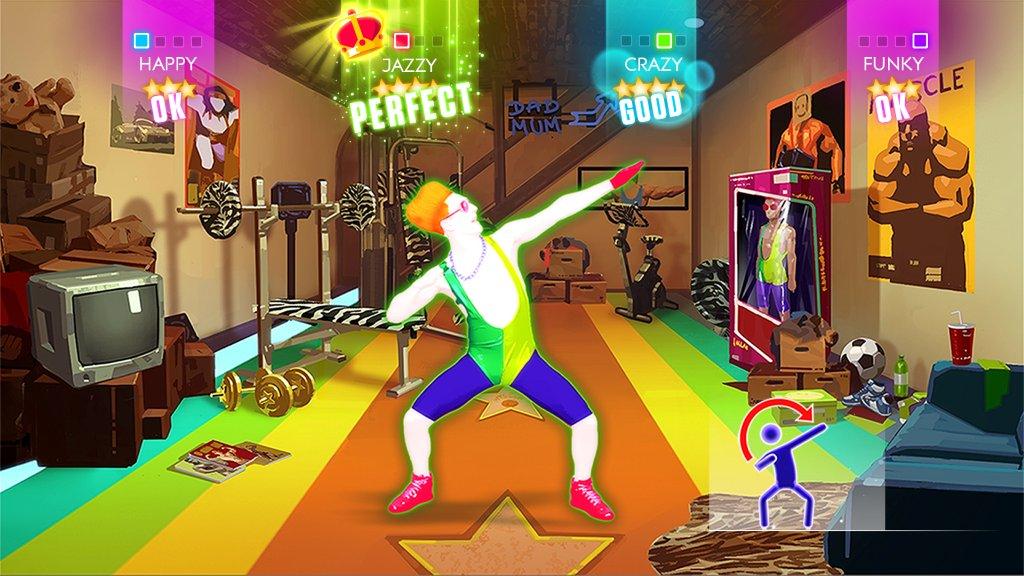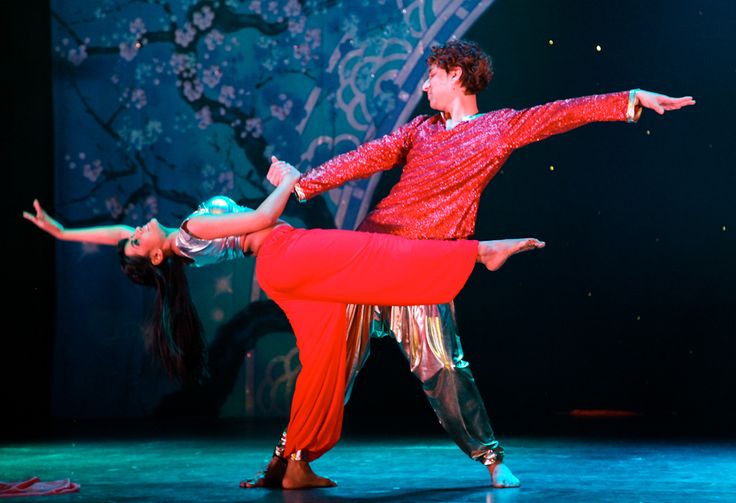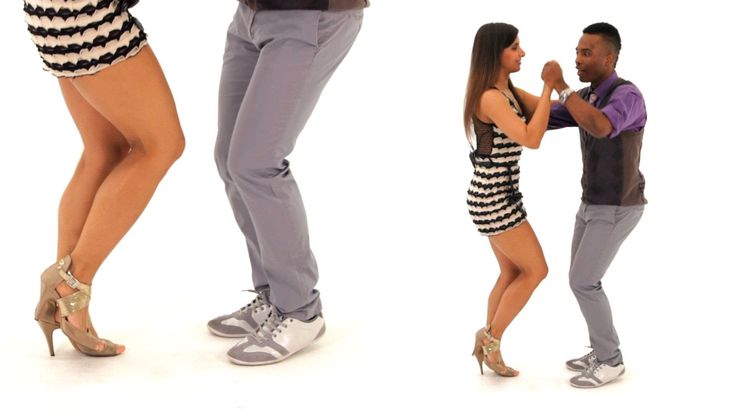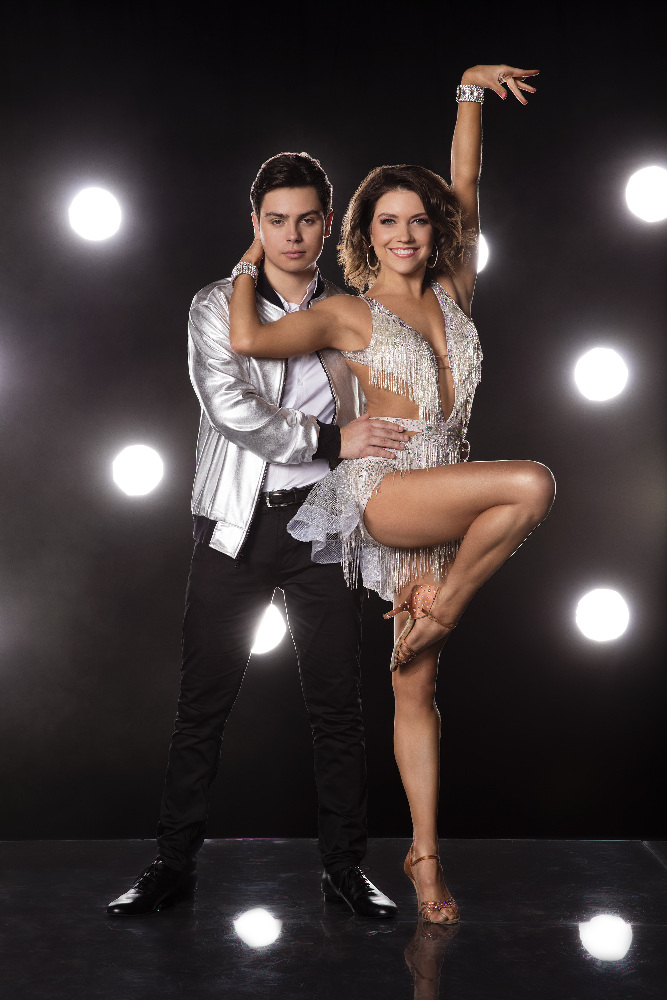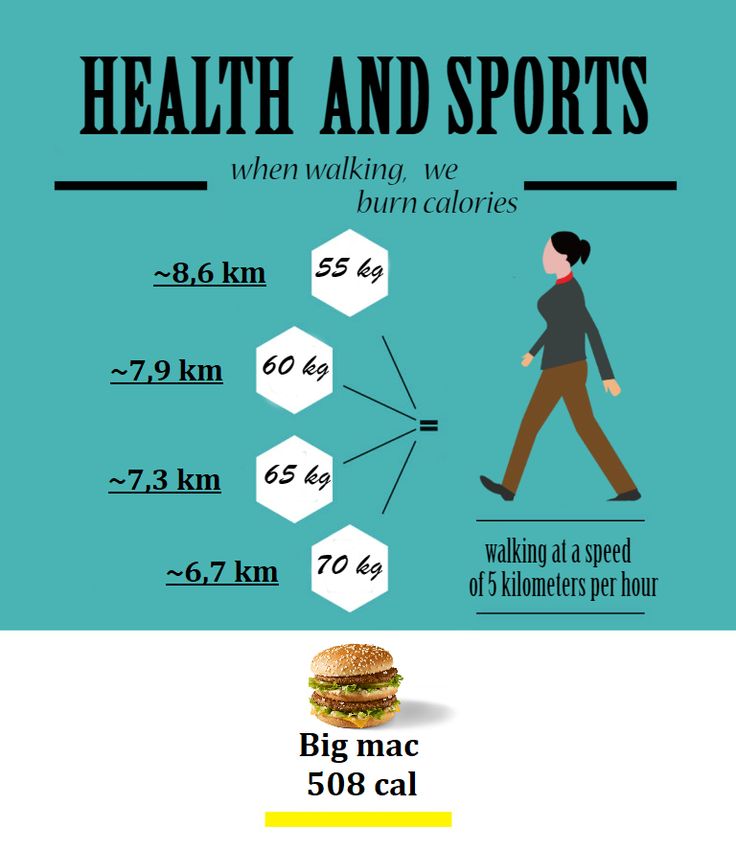How ballroom dance
How To Ballroom Dance For Beginners (Videos)
Ballroom dancing is one of the classiest types of formal dancing and it includes 20+ different dances.
In this guide you’ll learn how to Ballroom dance for beginners with 3 videos (below).
But first a quick intro…
There are the traditional Ballroom dances which include: Waltz, Foxtrot, Viennese Waltz, Tango, Quickstep and more.
And then there are what are considered Latin-Ballroom dances which include: Cha Cha, Rumba, Swing, Bolero, Mambo, Salsa, Jive, Samba and more.
I’m a Beginner, Which dances should I start with?
Our recommendation is to learn the basic steps of these 3 dances: The Slow Waltz, Rumba and Cha Cha.
These 3 dances are great because they fit most of the popular music. Read more about the best social dances to learn here.
But wait, before you start learning the Ballroom basic steps below, you need to know how to take hold with your partner.
First, Learn The Ballroom Dance Hold
In this video we explain how to achieve what is referred to as “The Closed Hold” in Ballroom dancing:
The main points are:
● Leader’s left hand connects to Follower’s right hand, and held at Follower’s eye level.
● Leader’s right hand is placed just underneath the lady’s left shoulder blade area.
● Followers place their left arm on the man’s shoulder area, and press down slightly to connect with the leader’s right arm.
● When doing a strictly Ballroom dance you will have less space between you – and more space during the Latin-Ballroom dances.
● Keep your core engaged at all times for better balance and to feel your partner’s weight.
Next, Ballroom Dance Steps (Learn The Basics)
1st of 3: Learn The Slow Waltz Basics
The slow Waltz is beautiful dance with emphasize on smooth gliding across the floor with rise and fall technique (going up and down).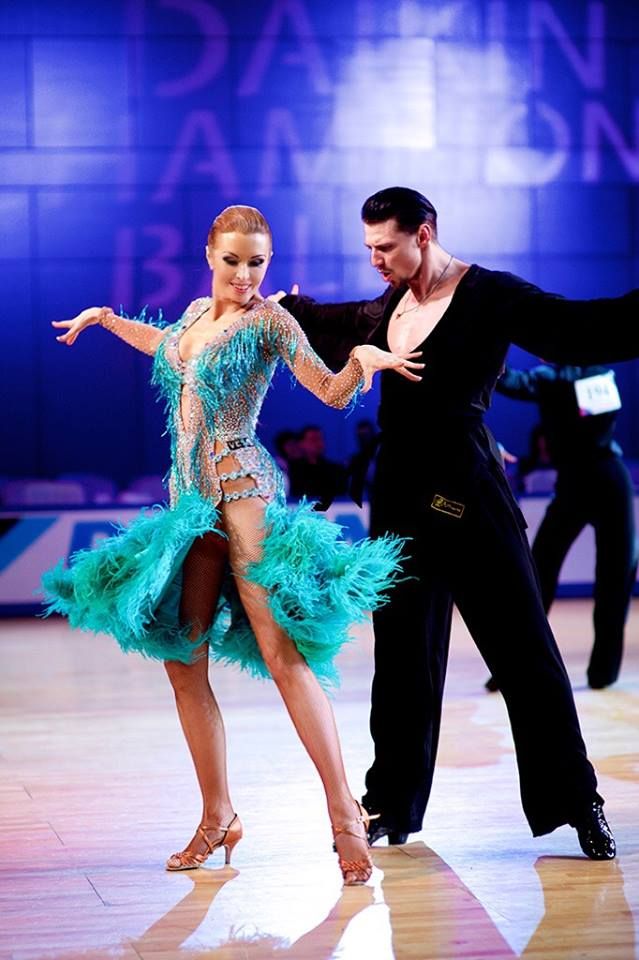 The main characteristic of this dance is the iconic timing of 1,2,3. Learn the basic step below.
The main characteristic of this dance is the iconic timing of 1,2,3. Learn the basic step below.
The Waltz basic steps (The Box Step):
Breakdown of Waltz steps:
Men’s steps:
Forward with Left Foot
Side with Right Foot
Close Left Foot to Right Foot (And Switch Weight)
Back with Right Foot
Side with Left Foot
Close Right Foot to Left Foot (And Switch Weight)
Lady’s steps:
Back with Right Foot
Side with Left Foot
Close Right Foot to Left Foot (And Switch Weight)
Forward with Left Foot
Side with Right Foot
Close Left Foot to Right Foot (And Switch Weight)
Related: More on How Waltz dance here.
2nd of 3: Learn The Rumba Basic Steps
The American Style Rumba is one of the most social friendly Ballroom dances.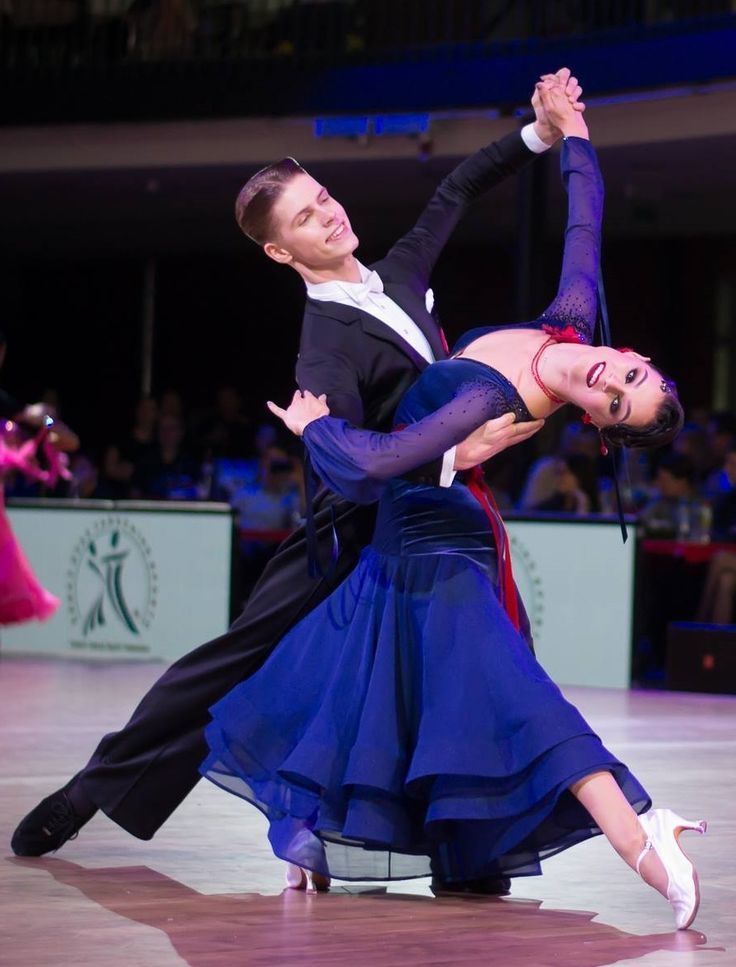 The basic step is a also a box step (Just like the Waltz) but the difference here is that there is no up and down motion, instead dancers use what is called Cuban Motion technique – where the dancers bend and straighten their knees on every step – producing a hip action.
The basic step is a also a box step (Just like the Waltz) but the difference here is that there is no up and down motion, instead dancers use what is called Cuban Motion technique – where the dancers bend and straighten their knees on every step – producing a hip action.
Rumba Basic Steps (The Box Step):
Breakdown of Rumba steps:
Men’s steps:
Forward with Left Foot
Side with Right Foot
Close Left Foot to Right Foot (And Switch Weight)
Back with Right Foot
Side with Left Foot
Close Right Foot to Left Foot (And Switch Weight)
Lady’s steps:
Back with Right Foot
Side with Left Foot
Close Right Foot to Left Foot (And Switch Weight)
Forward with Left Foot
Side with Right Foot
Close Left Foot to Right Foot (And Switch Weight)
Related: More on Rumba dance steps here.
3rd of 3: Learn The Cha Cha Basic Steps
The Cha Cha dance is a very lively and fast dance. It’s a dance that has lots of quick footwork and hip actions – with emphasize on the rhythm. The main characteristic of this dance is the triple step chasses which are present through out the entire dance.
Cha Cha Basic Steps (The Side Basic Step):
Breakdown of Cha Cha steps:
Men’s steps:
Side with Left Foot
Back with Right Foot
Replace weight Forward on Left Foot
Side With Right Foot
Close Left Foot To Right Foot (Switch weight)
Side With Right Foot
Forward with Left Foot (Check action)
Replace weight Back on Right Foot
Side with Left Foot
Close Right Foot to Left Foot
Lady’s steps:
Side With Right Foot
Forward with Left Foot (Check action)
Replace weight Back on Right Foot
Side with Left Foot
Close Right Foot to Left Foot
Side with Left Foot
Back with Right Foot
Replace weight Forward on Left Foot
Side With Right Foot
Close Left Foot To Right Foot (Switch weight)
Related: More on Cha Cha dance here.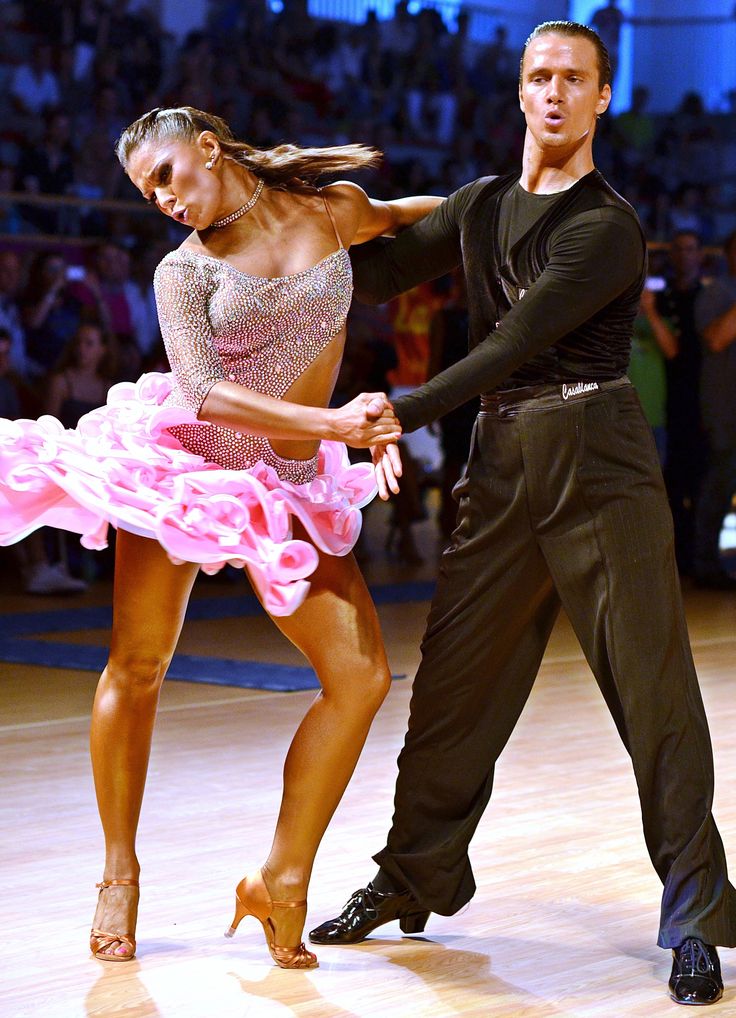
Other Dances To Learn
The following 5 dances are also great for anyone looking to expand on their Ballroom dancing learning (They are also taught in our membership). Click on them to learn them:
Learn East Coast Swing Moves
The East coast swing is a dance that originated from Lindy Hop and has lots of turn and spins. The leaders and followers both do rock steps and triple side steps through-out this dance, with bending and straightening the knees.
Learn Foxtrot basic steps
The Foxtrot is a great Ballroom dance to use to get around the rooms and at weddings and Ballroom dance parties. This is one of the easiest dances to learn because it involves 2 walks and side steps for both partners. It is a classy dance that fits may of the Frank Sinatra and Michael Bubble music.
Learn Bachata dance steps
The Bachata is a sensual Latin dance and is a perfect dance to do socially for couples. The basic steps involve side to side stepping, with the 4th and 8th steps done as taps (without change of weight). This move is great to do at Latin dance clubs and parties.
This move is great to do at Latin dance clubs and parties.
Learn Salsa basic steps
Salsa is one of the hottest Latin dances right now and it fits many of the Reggaeton music played at clubs and parties. The Salsa basic steps consist of fwd and back rock steps and aside from that many of the moves include: spins, underarm turns, hip actions and dips.
Want More Dance Lessons?
We offer a membership that includes access to 300+ Ballroom and Latin dance videos online. Including American & International style videos.
Membership Info & Registration
How To Ballroom Dance For Beginners
Learn how to Ballroom dance with our step by step Latin and Ballroom dance lessons online.
Our videos will break everything to make sure you know your steps, timing and technique.
Below you will find free Basic Ballroom dance steps for beginners for Cha Cha, Rumba, Salsa, Swing, Tango, Foxtrot, Waltz and Merengue.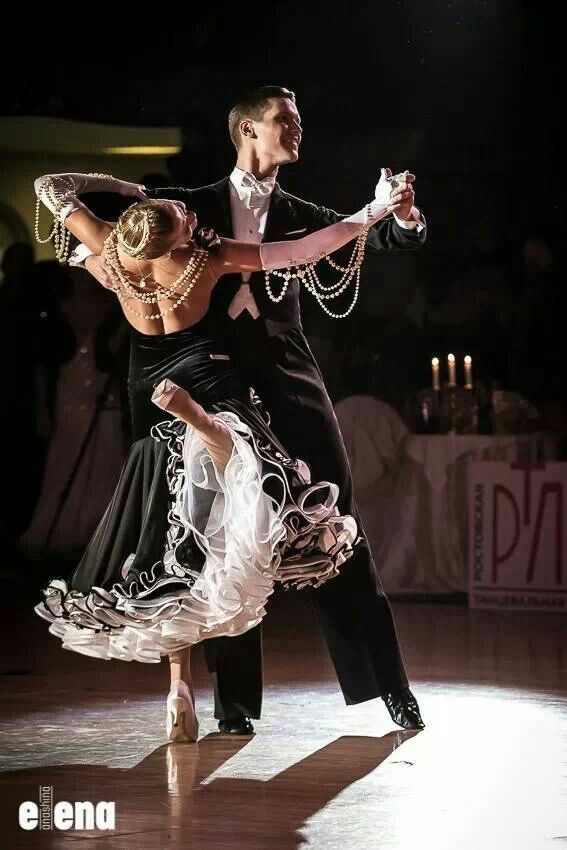 In each mini course you will learn the most essential basic steps with HD videos.
In each mini course you will learn the most essential basic steps with HD videos.
How to Ballroom dance for beginners - Free Video Courses:
How to dance with a partner 101 - Social dance steps
Get introduced to social dance steps in this free mini course. Learn how to social dance with 3 Ballroom dances: Rumba basic, Swing basic and Waltz basic. These dances are perfect for partner dancing at weddings and parties. Perfect for beginners looking to get started.
Waltz dance steps for beginners
The slow Waltz is one of the most classical Ballroom dances - dating back to 16th century when they used to hold "Balls". The Waltz's main characteristic is the rise and fall used through out all the steps. Our videos will teach you the most basic Waltz steps with ease.
Cha Cha dance steps for beginners
This cheeky dance is perfect for anyone starting out. This Ballroom dance has a lot of quick and sharp foot and leg movements. It is characterized by a triple step which is danced on the "Cha Cha 1" counts. In this video course you will learn 3 beginner dance steps that you will be able to use right away.
It is characterized by a triple step which is danced on the "Cha Cha 1" counts. In this video course you will learn 3 beginner dance steps that you will be able to use right away.
Swing dance steps for beginners (East coast Swing)
The East coast Swing combines rocks steps and triple steps to create a very fun and energetic dance. This dance is influenced by rock n roll and Lindy hop styles - which give it tons of variations including kicks, flicks and turns. Have some fun with the swing now!
Rumba dance steps for beginners
The Rumba combines lots of body, hip and arm movements to make this Cuban dance very expressive. In this mini course you will learn the basic steps, box step and slow underarm turn. This dance requires lots of control because of its rhythm - Slow, Quick, Quick. Learn the basic steps with our videos in this beginner course.
Salsa dance steps for beginners
This popular Latin dance is perfect for those of you who like to fast rhythms and lots of turns and spins.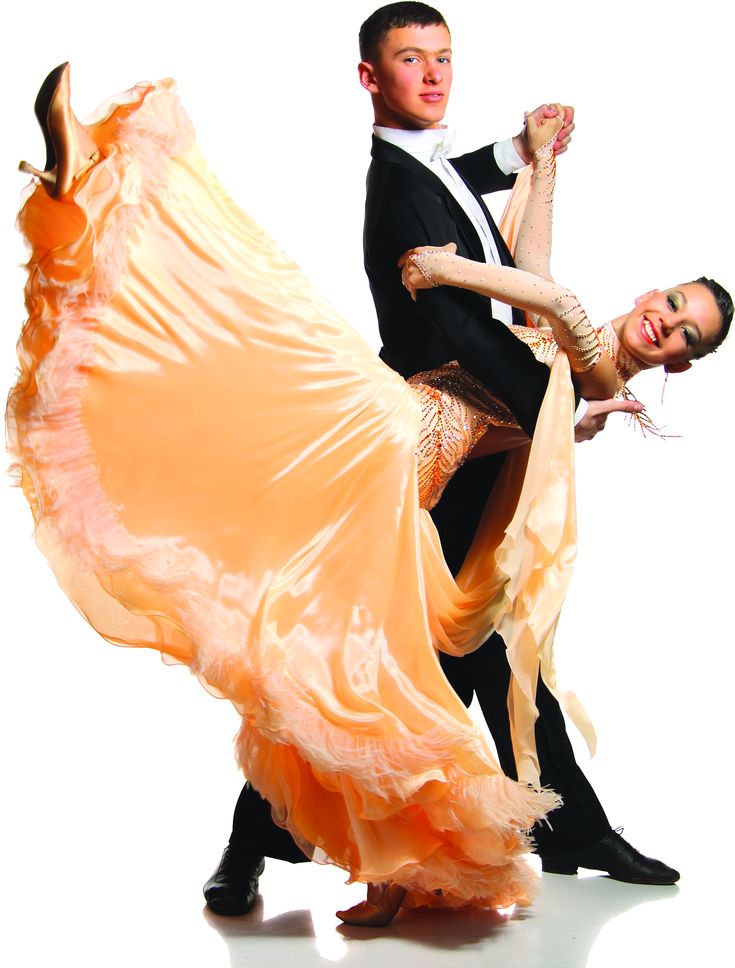 This dance is a great for social dancing with its emphasize on lead and follow - where the man initiates movements and the lady follows. After our mini course you'll be able to use what you learned in Latin clubs.
This dance is a great for social dancing with its emphasize on lead and follow - where the man initiates movements and the lady follows. After our mini course you'll be able to use what you learned in Latin clubs.
Foxtrot dance steps for beginners
One of the first Ballroom dances that people usually learn is the Foxtrot. It is a very elegant dance that travels around the room. Both men and women push off the standing leg in order to move from foot to foot. This dance is one of the best for pure lead and follow.
Tango dance lessons online for beginners
This Ballroom dance is great for passionate dancers who like to express the Tango music. This is a traveling Ballroom dance that combines a lot of shapes and rotational movements. In our mini course you will learn 3 beginner moves to get you started. Enjoy.
Merengue dance steps for beginners
Here is a Latin dance that is considered to be the easiest of all! The saying goes: "If you can walk, you can Merengue". The basic steps all consist of small weight changes that could be danced on the spot, or across the floor. There are lots of intricate turns and arm twists too.
The basic steps all consist of small weight changes that could be danced on the spot, or across the floor. There are lots of intricate turns and arm twists too.
Want More Latin & Ballroom Lessons?
Passion4Dancing Dance Training
Become a member at Passion4dancing.com and get access to 300+ video lessons teaching you Latin and Ballroom dancing (American & International Style).
Visit Pasion4Dancing (Click Here)
about Ballroom Dancing
Ballroom Dancing is the most beautiful sport that combines art, musicality, sophistication and physical strength of the dancers.
The word “ball” came to Russian from French and comes from the Latin verb ballare, which means “to dance”.
All ballroom dances are in pairs. A couple - a gentleman and a lady - dance in compliance with the points of contact.
Latin American program consists of dances:
Samba - Brazilian dance with characteristic fast foot movements, flirtatious cha-cha-cha , in which the emphasis is on the movement of the hips; sensual rumba with its mesmerizing movements combined with wide steps;
passionate and original paso doble representing the Spanish bullfight,
and the fastest and most groovy in the Latin American program jive with many jumps and spins.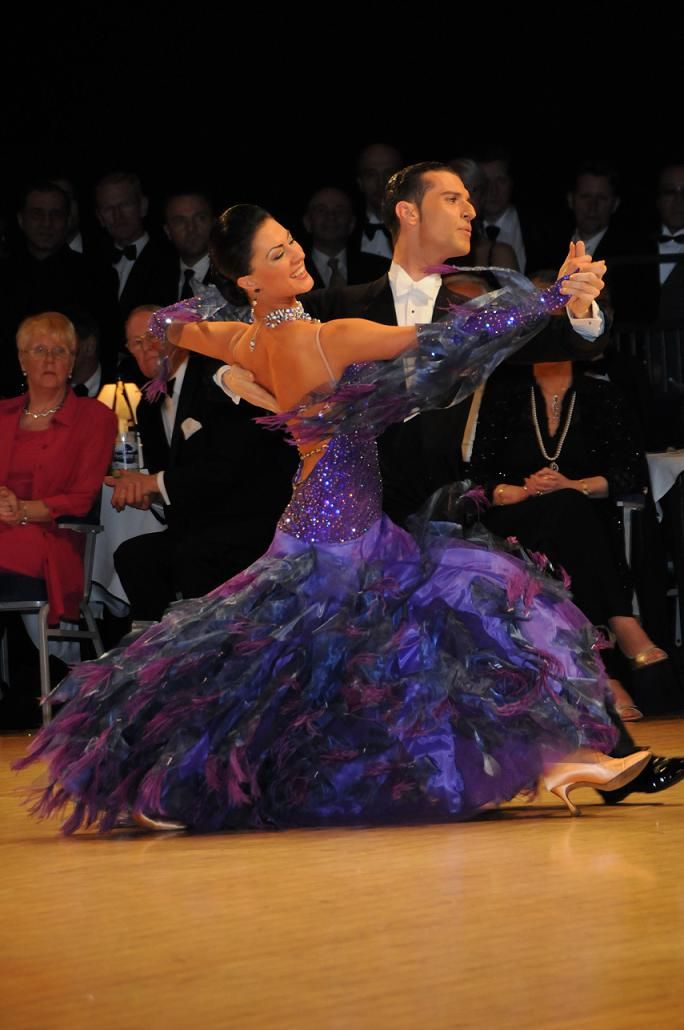
The European program includes Viennese waltz with its powerful turns and sharp steps combined with smooth movements and precise lines, more calm and romantic slow waltz ; slow foxtrot , which at one time became a real revolution, and incendiary quickstep or fast foxtrot with numerous jumps, jumps and turns; and, of course, passionate tango .
The history of ballroom dancing
The beginning of balls dates back to the festivities at the French and Burgundian courts. The first ball, about which there is information in history, was given in 1385 in Amiens on the occasion of the marriage of Charles VI with Isabella of Bavaria.
But pre-Petrine Russia did not know balls. They were started by Peter I. Peter's balls always opened with a polonaise, followed by a minuet and other dances that were fashionable at that time.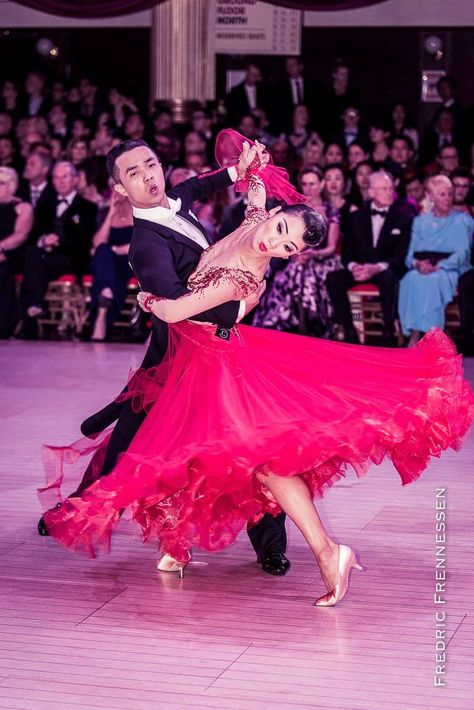
Already under Anna Ioannovna, balls were in full swing. The baton was picked up by Catherine the Great, whose favorite saying was: "The people who sing and dance do not think evil." Catherine's balls were distinguished by their special splendor and pomp, which is evidenced even by people spoiled by the splendor of Versailles.
However, balls have retained their true form since the time of Louis XIV, when they took root in all German residences. Since then, balls have been an essential part of most court festivities. A certain ceremonial gradually developed, which, despite its shyness, was accepted everywhere with minor changes, and only in the 19th century was somewhat simplified.
In the 1920s in England, a special Council for Ballroom Dancing was established under the Imperial Society of Dance Teachers. English specialists standardized all the dances known by that time - the waltz, fast and slow foxtrots, tango. This is how competitive dances arose, and since then ballroom dance has been divided into two areas - sports and social dance.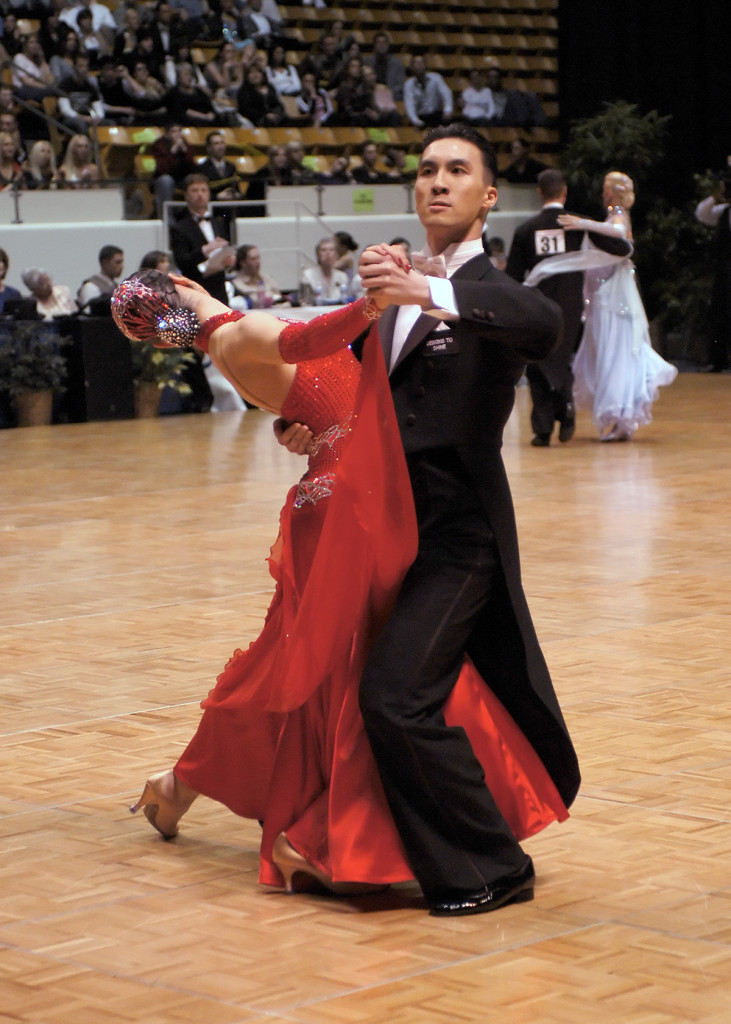 At 19From the 1930s to the 1950s, the number of standard ballroom dances increased due to the addition of five Latin American dances (rumba, samba, jive, paso doble, cha-cha-cha).
At 19From the 1930s to the 1950s, the number of standard ballroom dances increased due to the addition of five Latin American dances (rumba, samba, jive, paso doble, cha-cha-cha).
Competitions
Sports dance competitions are held. The rules for participation in them are written down to the smallest detail, from the age of the partners to the details of clothing. Several programs have been formed: European, Latin American, biathlon (ten dances), European and Latin American sequoia (three-minute show to original music), European and Latin American formation (competitions of ensembles of 8 couples). Amateur world championships are held under the auspices of the WDSF (formerly IDSF), and professional ones are held under the auspices of the World Dance Council. The most prestigious in the world continue to be English competitions - UK Open and Blackpool Festival.
Another area of competitive dance is professional-amateur mixed pairs (Pro-Am), which is gaining more and more popularity in Russia.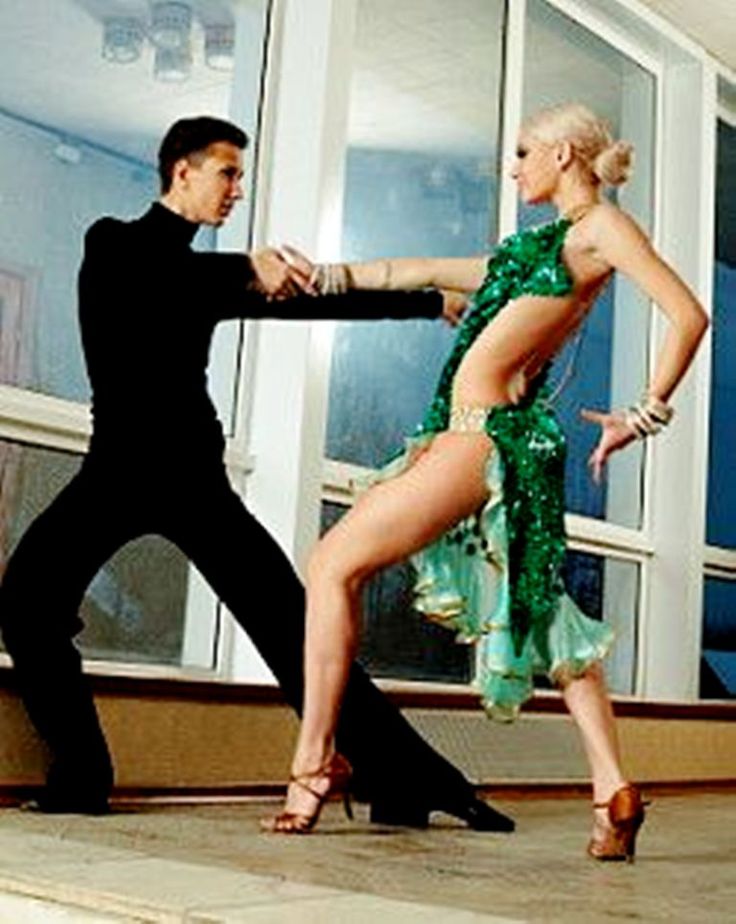 It has no age restrictions and is available to everyone.
It has no age restrictions and is available to everyone.
More than dancing
In pair dance there is everything that happens in a relationship between a man and a woman: mutual understanding and opposition, power and admiration, passion and struggle. This is a fusion of different elements, when everything else around seems to be insignificant details. That is why, despite the increased popularity of solo dances, partner dances are an eternal theme. In ballroom dancing, harmony and balance are comprehended. They teach to interact with each other and understand each other without words. Ballroom dancing will allow you to significantly improve your physical shape, gain a beautiful posture, and tone your muscles. Ballroom dancing is a true classic that has passed through the ages and gives an incomparable sensation.
Each of the ballroom dances has its own special energy, inner passion and bright character. This is a whirlwind of emotions and noble dignity, restraint and intensity of feelings.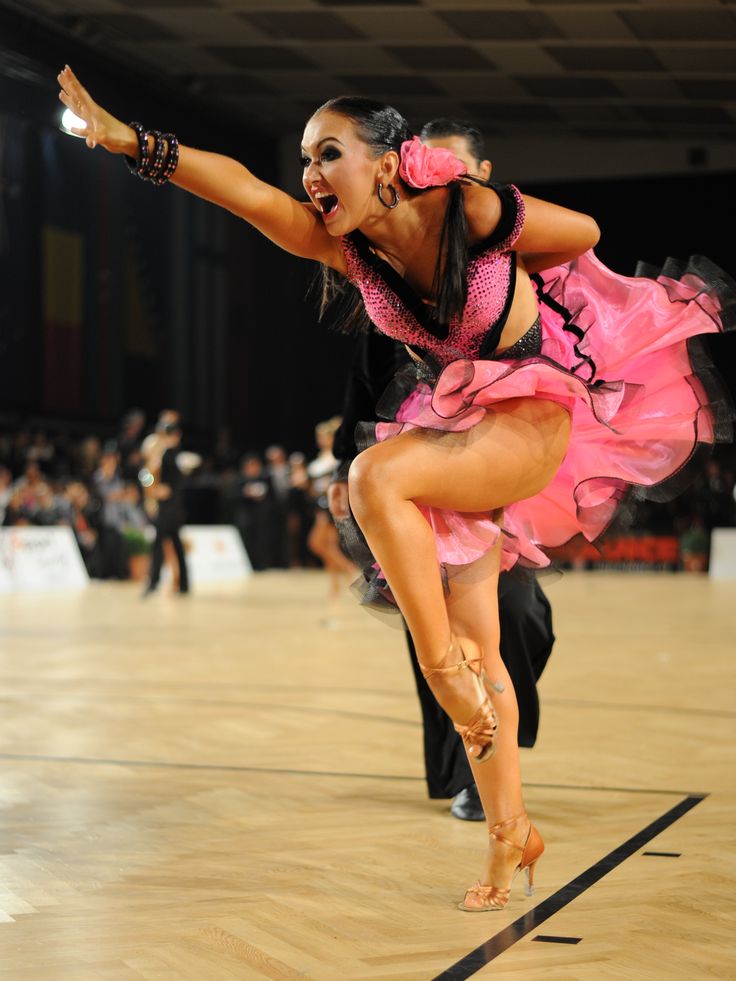
Why you should choose ballroom dancing for children
Most children from a very young age have irrepressible energy and craving to constantly move. It is very important for parents to encourage and support this desire of kids to be active and direct it in the right direction. For this, there are many interesting and useful activities. We will consider, probably, one of the most useful and beautiful - sports ballroom dancing.
Ballroom dancing has a long historical past and originates from the times when beautifully dressed partners and gallant partners performed them at balls in huge parquet halls. After passing through a lot of time, they have changed significantly, transforming into a dance sport, without losing their beauty and sophistication. You can do them at different ages, starting from the earliest - from 4 years.
Traditionally, ballroom dancing is divided into two programs: Latin American, including cha-cha-cha, samba, rumba, paso doble, jive, and European - slow waltz, tango, Viennese waltz, slow foxtrot, quickstep. Unlike all other dance types, sports ballroom dancing is a whole science, art and sport at the same time, a beautiful action in which dancers convey their emotions and feelings and tell separate stories with the help of movements, elements and gestures. These are artistic productions reproduced with the help of the skill and artistry of the performers. Ballroom dancing is a very rich and rather complicated direction, so it is best to start learning the basics of dance technique from childhood. So at an older age, you can achieve significant results and a professional level of performance.
Unlike all other dance types, sports ballroom dancing is a whole science, art and sport at the same time, a beautiful action in which dancers convey their emotions and feelings and tell separate stories with the help of movements, elements and gestures. These are artistic productions reproduced with the help of the skill and artistry of the performers. Ballroom dancing is a very rich and rather complicated direction, so it is best to start learning the basics of dance technique from childhood. So at an older age, you can achieve significant results and a professional level of performance.
By attending classes, the child receives all-round development and communication skills in society, he strengthens his health, keeps himself in shape from an early age and develops a strong character and endurance. If you strive to bring up a harmonious personality in your child and want to see him/her fit, athletic and successful in all areas of life, then ballroom dancing is the right choice!
For the youngest dancers, lessons are organized in the form of fun, moving dance games.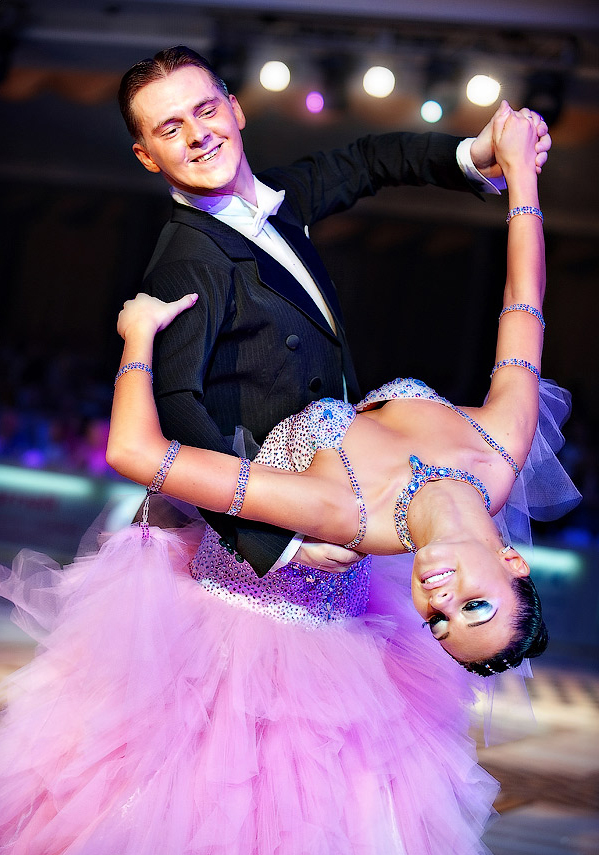 Together with the teacher, the kids learn how to properly hold the body, stand and move. They learn to feel the music, its mood and move with it. For older children, classes are more complex and are aimed at learning dance elements, movements and connections that are characteristic of each dance separately.
Together with the teacher, the kids learn how to properly hold the body, stand and move. They learn to feel the music, its mood and move with it. For older children, classes are more complex and are aimed at learning dance elements, movements and connections that are characteristic of each dance separately.
For children of all ages, this is a great hobby that helps to spend their free time correctly and usefully. The child will not be distracted by harmful, meaningless activities, will not waste his time in front of a computer or TV if dancing will captivate him.
Ballroom dancing significantly develops and strengthens health and immunity, promotes the acquisition of correct posture, forms a beautiful gait and smooth movements, keeps the body in good shape and strengthens muscles. During training, coordination of movements, a sense of rhythm and musicality develop, and the body easily acquires flexibility and plasticity, due to the fact that the joints and muscles in childhood are extremely elastic and mobile.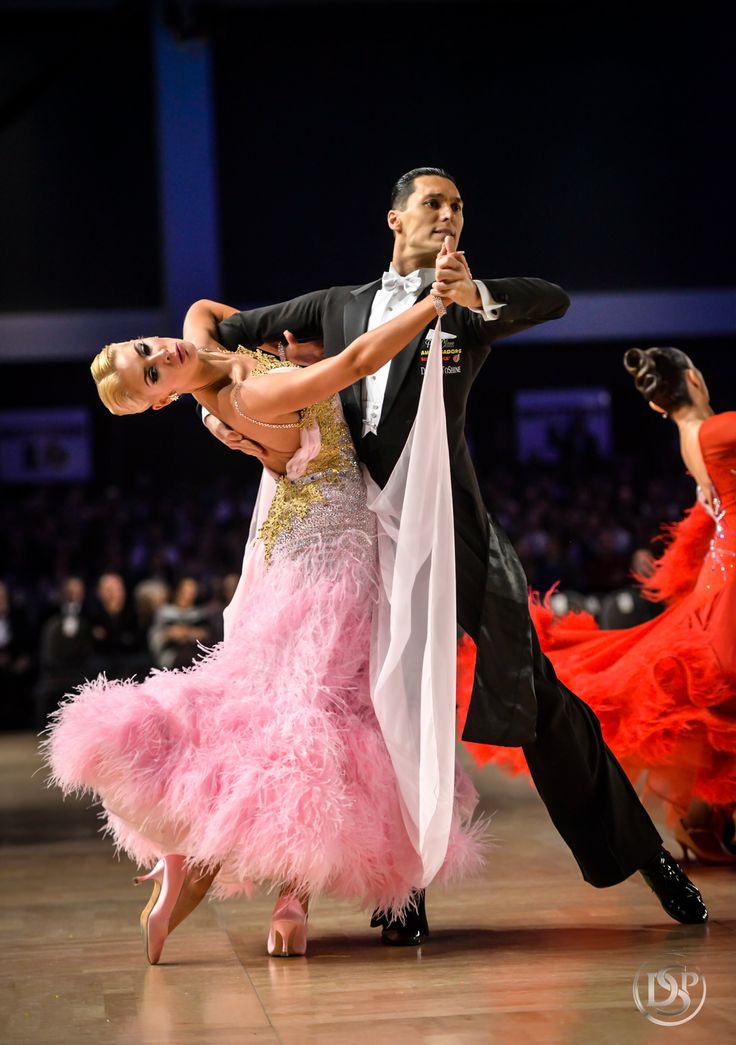 These skills are retained by the child for life, helping him in a variety of life situations.
These skills are retained by the child for life, helping him in a variety of life situations.
Regular classes teach teamwork, develop a sense of responsibility, help to think systematically and collected. Very quickly, the child will begin to understand that without making an effort, it is impossible to achieve significant success and results, and he will begin to train at full strength, and this, in turn, will increase his self-esteem and develop leadership qualities. The child will learn to discipline and self-organization, develop willpower and endurance, temper his endurance and character.
Ballroom dancing lessons instill artistry, teach you how to effectively present yourself in public. These are important qualities that can come in handy in many life situations.
As children master the art of dancing and learn to combine dance movements and elements, children develop their imagination, imagination and learn to improvise.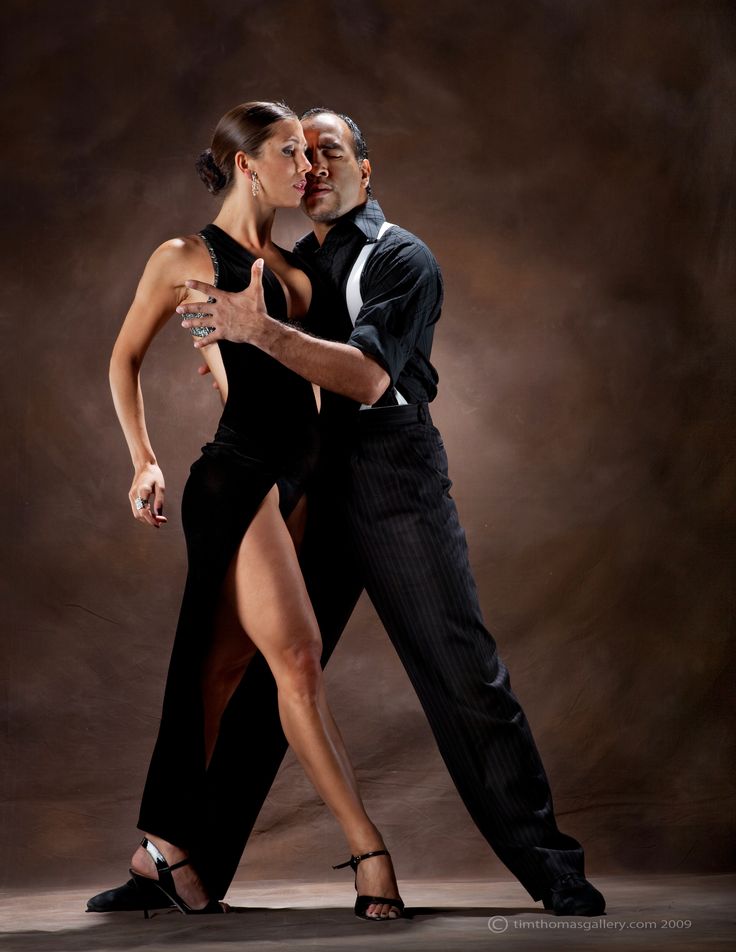 Training has a significant impact on memory and assimilation of information: children who attend dance lessons, as a rule, more successfully master new knowledge in the classroom, significantly overtaking their peers in development. Regular training develops logical thinking and concentration.
Training has a significant impact on memory and assimilation of information: children who attend dance lessons, as a rule, more successfully master new knowledge in the classroom, significantly overtaking their peers in development. Regular training develops logical thinking and concentration.
Ballroom dancing for children is not only a way to throw out energy and emotions, but also a way to open up, show all your abilities. They comprehensively develop aesthetic perception, teach to feel and understand beauty from an early age. By attending classes, the child receives all-round development and communication skills in society, he strengthens his health, keeps himself in shape from an early age and develops a strong character and endurance. If you want to bring up a harmonious personality in your child and want to see him/her fit, athletic and successful in all areas of life, then ballroom dancing is the right choice!
Comfortable conditions
Your choice is in favor of our dance and sports school!
We have 3 modern dance halls, separate locker rooms, waiting area
Free classes
Free trial class for EACH direction.